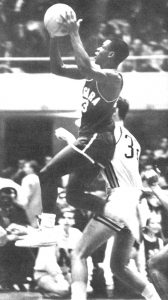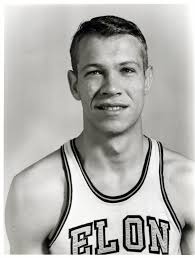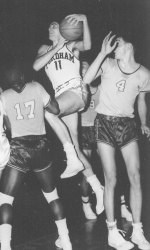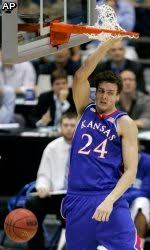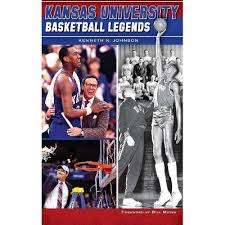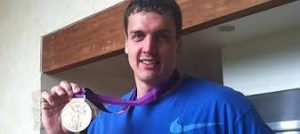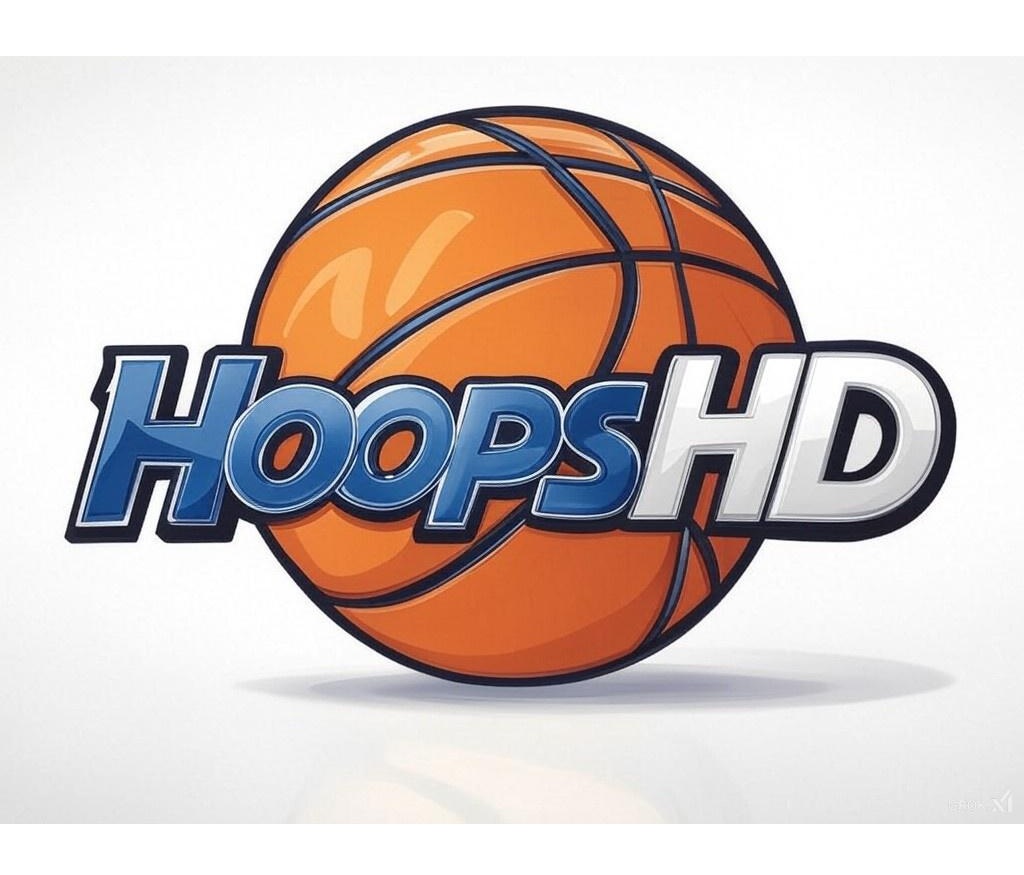With the 2020 NBA draft taking place next week we will spend the days ahead taking a walk down memory lane with a choice collection of players who are celebrating an awesome anniversary this year. From the 1st player in NBA history to score 2000 PTS in a season (70th anniversary) through the 2000 Pac-10 POY (20th anniversary), these stars have all seen their dreams come true in past drafts. We continue our series with Calvin Murphy. He was a 3-time All-American at Niagara, shot 95.8 FT% for Houston in 1981, and was inducted into the Basketball Hall of Fame in 1993. HoopsHD’s Jon Teitel got to speak with Bill McGrath, who covered Calvin for the Niagara Gazette, about the 50th anniversary of Calvin getting drafted.
Before Calvin became a basketball star he was a world-class baton twirler who won a national championship as an 8th grader in 1963 and won the Texas State Men’s Twirling Championship in 1977 (the same year that he made the Eastern Conference Finals with the Rockets!): did his baton skills translate well to any of his basketball skills? His quickness/hands/dexterity were great. When he was at Niagara he would put on a halftime exhibition at Buffalo Bills games. He was a freak athlete who could deke players out of position: his opponents would literally be left sprawling on the floor.
He was 1 of the best players in the nation at Norwalk High School and received 235 college scholarship offers: what made him choose Niagara? He always said that it was the coaching staff of Jim Maloney/Ed Donohue. His high school coach talked to him about his future and suggested he look for a school where he could be the man, unlike places such as Kentucky/UCLA. He got a good education and the coaches came up to Norwalk to watch him play all the time. He said that he would never have changed his mind: he thinks that 1-and-done players are unfortunate.
He was a 3-time All-American: what did it mean to him to receive such outstanding honors? He is a very humble guy and did not play himself up that much: he said that his teammates allowed him to be the man. There was no jealousy: everyone was willing to play their role to help the team win games.
On 12/7/68 he set an NCAA record for most PTS vs. a D-1 opponent with 68 (24-46 FG/20-23 FT, not to mention 6 REB/6 AST) in an 8-PT win over Syracuse (which is now #3 all-time behind Kevin Bradshaw/Pete Maravich): was it just 1 of those situations where every shot he put up seemed to go in because he was “in the zone”? I got to interview him a couple of years ago for the 50th anniversary of that game and he chuckled about it. He said that he could not do anything wrong and that it was like an out-of-body experience. He did not think much about it until it made national news as the highest-scoring game ever against a D-1 opponent. He gave credit for his teammates to finding him for open shots. About 15 minutes into the game he scored his 1000th career point in his 27th career game. His mother Ina and stepfather Robert happened to be there that night: she said he did something to surprise her every time she saw him play. People would show up 2 hours early because the gym only held 3200 people.
Despite scoring 2548 PTS in only 77 college games he was a 2nd round pick of San Diego in the 1970 NBA draft: how did he feel about not being a 1st round pick, and did he feel a measure of revenge after making the 1971 NBA All-Rookie team? He was annoyed about not being a 1st round pick but it motivated him by putting a chip on his shoulder. It was the 1st year of the Buffalo Braves and he hoped they would pick him but they took an Ivy League guy instead (John Hummer from Princeton). Some people thought he could not defend bigger guards due to his size but he thought it was a lot of baloney. He made his mark and had some things to prove because he had a huge heart and freaky athletic ability: I never saw anyone dribbling down the court as quick as he could. Bob Lanier was the #1 overall pick by Detroit and St. Bonaventure was Niagara’s rival school, which also got to him a bit.
On 12/14/73 he had 21 PTS/10 AST/9 STL in an 8-PT loss to Boston: how was he able to balance his offense with his defense? He relied a great deal on his athletic ability: he could block shots from 6’10” guys that would make the crowd go crazy. We tried to get him in the paper as much as we could.
He is still regarded as 1 of the best FT shooters ever, setting NBA records for most consecutive FT made (78 in a row from December of 1980-February of 1981) and highest FT% in a single season (95.8% in 1981): what was his secret for making FTs? I asked him about that 1 time: he said that if you center yourself on the FT line and look down you will see a bolt in the floor. He always centered himself and used the same stroke over and over. There was nothing special about bouncing/spinning the ball.
In Game 7 of the 1981 Western Conference Semifinals with Houston he set a playoff-career-high with 42 PTS in a 5-PT win over San Antonio while Moses Malone was out due to stomach ailment: how was he able to play his best when it mattered the most? I used to ask him about pressure because I saw him make a few game-winning shots. He had 1 game against Tennessee when Niagara trailed in the final seconds. Calvin got the ball and made a 15-footer to win the game by 1 PT. He said that pressure is self-imposed and he just went out and played without thinking about it.
His 1002 games played remains in the top-150 all-time: how was he able to stick around for such a long time despite standing 5’9”? That is quite an amazing number. He was very sculpted in his prime and was very strong for a guy his size. He got in a few fights and handled himself pretty well.
In 1993 he was inducted into the Basketball Hall of Fame (the shortest NBA player to ever be inducted) and in 2006 he was inducted into the College Basketball Hall of Fame: where do these rank among the highlights of his career? I would think that would be at the top to show that he proved himself: he was dedicated to his craft. The Hall of Fame is the pinnacle of success.

